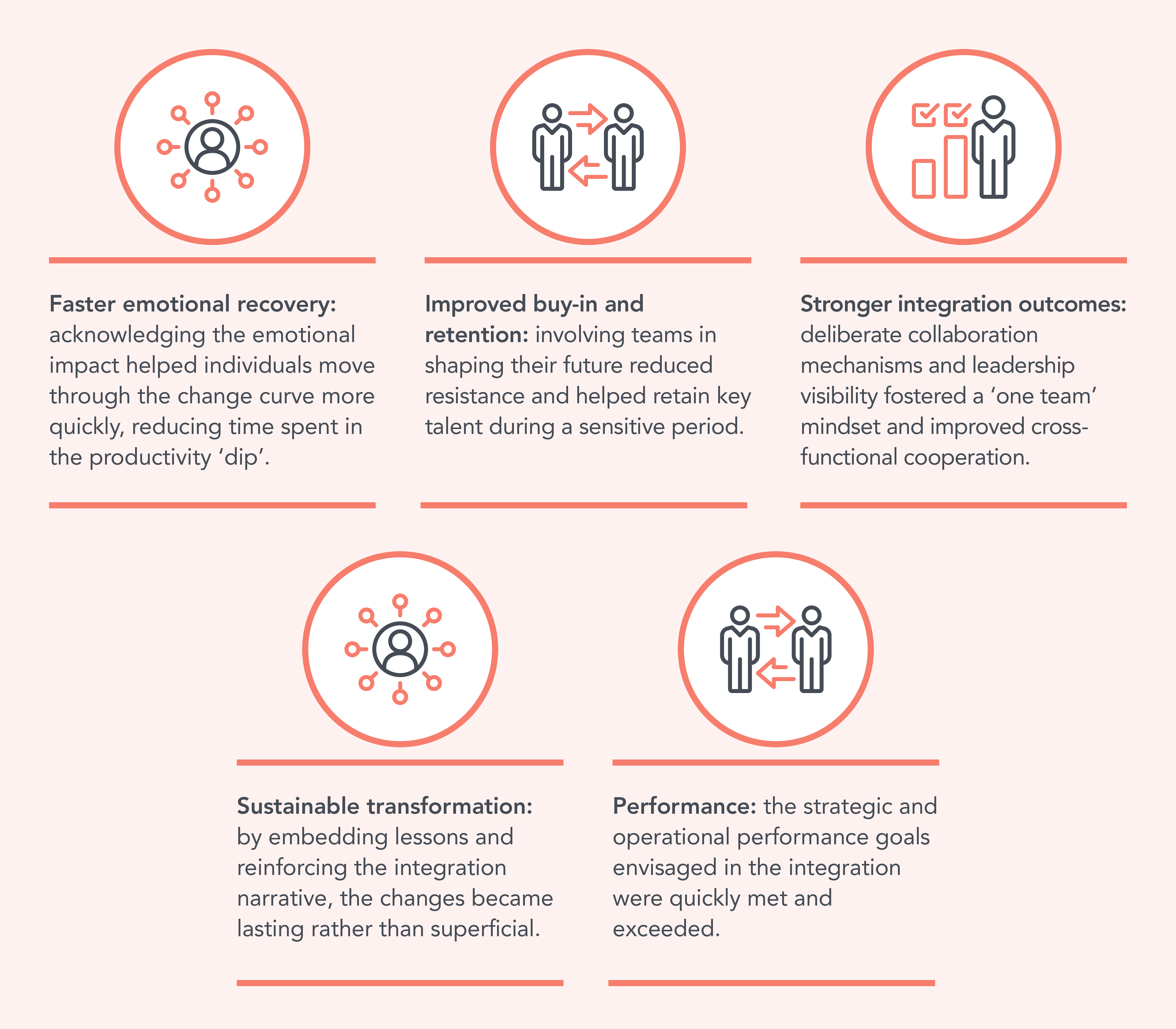Creating the human conditions for successful team integration

This global financial institution initiated a restructuring programme to integrate two previously separate teams across geographies. While the strategic and operational rationale for change was clear, the human impact was underestimated – including job uncertainty, contractual changes, and forced relocations.
With somewhere between 60 to 80% of mergers, acquisitions and large-scale integrations failing to deliver the outcomes promised when the deal was signed, the challenge for this partnership was to manage the emotional and psychological response to change while maintaining productivity and morale for a successful integration.
Focus
Integration is directly tied to profitability, client retention, and growth. Often, the human system can affect integration success, with culture clash, leadership misalignment, slowed decision-making, loss of talent, and the morale dip that comes when people don’t feel seen, heard, or included.
Our aim was to support the leaders and teams at this financial institution through this change, creating enabling conditions for people integration to ensure that performance was maintained and the integration went ahead with as little drag as possible from any psychological resistance to change.
Action
Our experience has shown that in all cases of structural integration we need to find an approach that blends attending to both critical structural issues and to creating a safe container for the human experience to be processed. It is only through this attention that we can confidently create ‘change readiness’ and buy-in.
We supported the client in creating ‘change readiness’, with the following steps:
- Scoping and building psychological safety: we facilitated workshops to build trust, encourage open dialogue, and allow individuals to express concerns without judgement, accelerating alignment.
- Joint diagnoses and collaborative planning: joint workshops, exercises and data gathered across surveys, interviews and team dialogues, were used to diagnose what needed to be worked on and to co-create a vision for the future, reinforcing a shared sense of ownership, and reducing resistance. For example, individuals impacted by relocation or job changes were consulted on their preferences, giving them agency in shaping their future.
- Putting joint plans into action and sharing success: we formed cross-team working groups charged with delivering specific outcomes to practise and embed collaboration through real work. Sharing stories of success was encouraged, creating proof points that the integration was working, shifting rhetoric to reality.
- Reshaping and adapting: effective integrations are not linear – they require continuous adjustment. We scheduled regular check-ins, with both teams and individuals, to ensure the change remains responsive rather than brittle
- Embedding with ongoing support and communication: we worked with senior leaders to consciously shape the integration narrative through storytelling. The newly formed working groups kept integration goals visible and relevant. Wins were celebrated publicly and collaborative behaviours were reinforced in meetings, town halls, and performance systems. All these factors worked together to maintain momentum and progress.
Impact

Find out more about the impactful work we do with MDBs and IFIs, including further insights and case studies.




